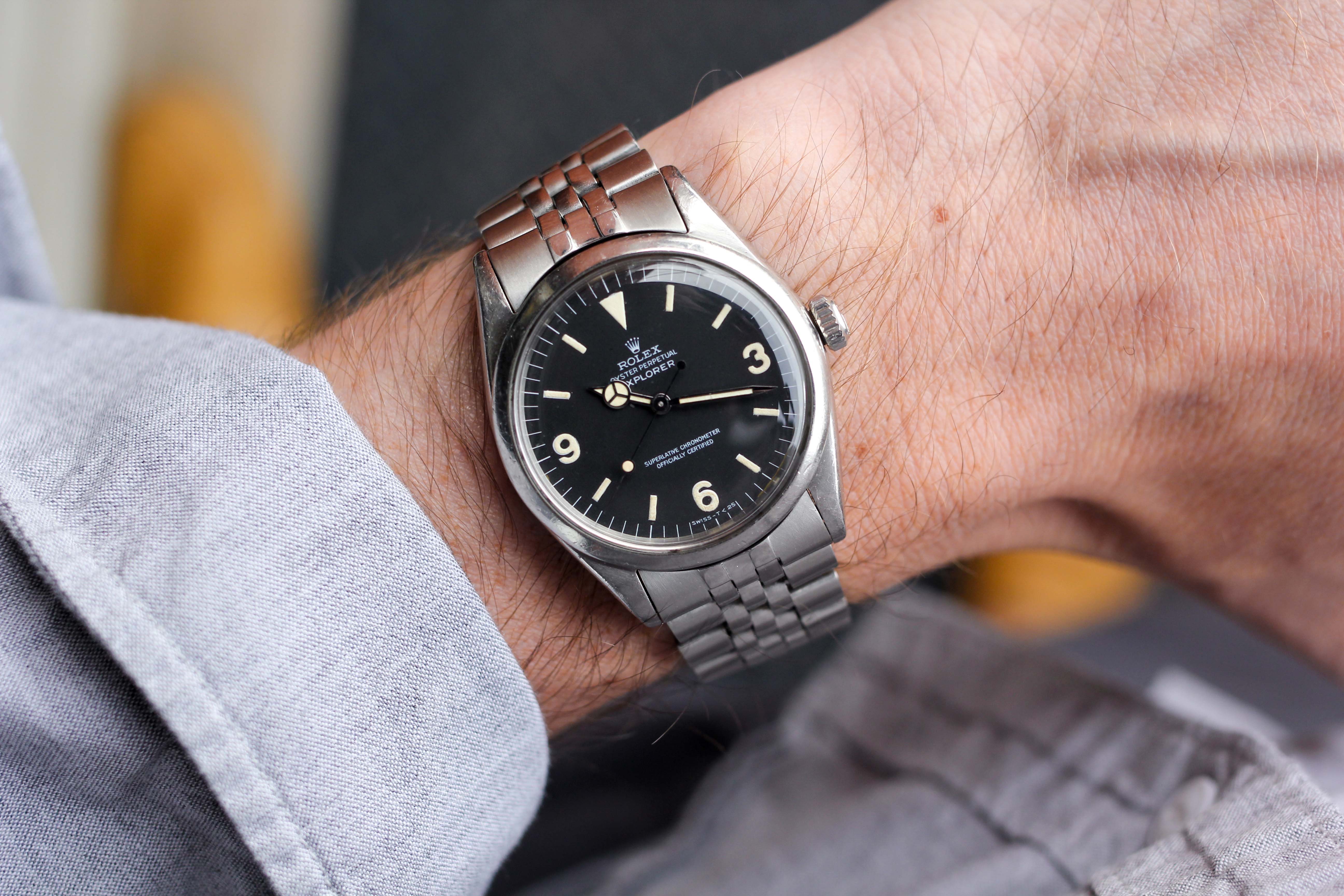It may sound crazy, but I didn’t own a single Rolex until my fourth year of collecting vintage watches. It wasn’t for a lack of resources. It wasn’t for a lack of desire. And it wasn’t for a lack of supply in the market. It just…didn’t happen. I would always find some type of excuse to put off buying one – something like “well they’re so common, I can always get one whenever I want it.” Or “sure, it’s great, but for the money I’d rather have [insert watch here].” On the surface, they were all totally valid arguments. But I knew that I would eventually cave, and I also had a pretty good idea which model would be the one to break me in.
A friend (Justin Vrakas) would frequently post pictures of his 1016 Explorer on Instagram, and every single time, my thumb seemed to stop mid-scroll. The balance of the dial, the modest dimensions of the case, and the creamy patina (on good examples) just all seemed perfect. During a trip to Milwaukee last summer, I wore Justin’s 1016 for some time, and was ready to make the call: when my anti-Rolex streak finally ended, the Explorer would be the watch to do it. Over the next six months or so, I passively searched for 1016s but found that my picky tastes were, in fact, limiting the number of accessible examples – turns out you can’t snap your fingers and have a fine example of vintage Rolex appear on your wrist. Then one day, an eBay listing appeared from a pawn shop in Virginia. The pictures were predictably awful, and the example had a fair amount of surface scratches on the case and crystal. In fact, the crystal was so scratched that it made it tough to determine if the dial was clean, but I had an optimistic feeling.

After reaching out to the seller directly to ask about the integrity of the dial and hands, I was confident (enough) to take a punt on it: if my $6,750 bid was enough to win, that would leave me enough room to source a new domed crystal, get it serviced, and replace the original jubilee bracelet with an Oyster bracelet. The final tally for all of that work to bring it “to spec” wouldn’t be far off from the price if I was to buy from a dealer, but there’s something to be said for doing all the work yourself to bring a forgotten example back to life. The process creates a sense of satisfaction that wouldn’t otherwise exist if I was to pick one off the shelf from the big dealers. I can’t be the only one who thinks that, right?
In the end, my maximum bid was enough to win the 1016 outright, and I soon had my very first Rolex in-hand. After sourcing the necessary parts and shipping it off to the spa, it finally arrived back home, ready to be worn. My reluctance to own a Rolex seemed to evaporate after I strapped the 1016 to my wrist. In fact, the 1016 didn’t stop running continuously for over a week because I couldn’t seem to wear anything else. After a few months with the 1016 in the rotation, I still feel as strongly about it as I did initially. It’s the perfect no frills, everyday wearer out of the 1960’s Rolex sports models and will be a staple of my collection going forward.

The Nitty Gritty
This example will never be regarded as a safe queen, but it’s ultimately a perfect daily wearer for me, as the dial and hands are in great shape (further accentuated by the T-22 domed crystal). The case has all the trademark signs of sleeve polishing and drawer duty over the decades, but isn’t soft to the point where I found it necessary to have it touched up. Finally, an interesting note for people new to the 1016 – despite the lug width being 20mm, the contours of the case don’t allow 20mm spring bars to stay concealed within the lug holes (which you can see in the pictures here).






